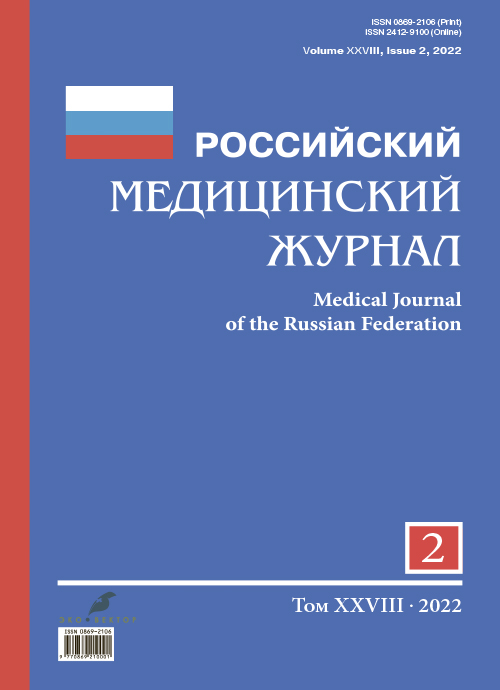Osteointegration assessment by the resonant frequency analysis method in patients with different bone mineral density (clinical and biomechanical aspects): prospective study
- Authors: Aghazada A.R.1, Aghazada R.R.1, Amkhadova M.А.2, Ivanova E.V.2
-
Affiliations:
- Aliyeva Azerbaijan State Institute of Improvement of Physicians
- Vladimirsky Moscow Regional Research Clinical Institute
- Issue: Vol 28, No 2 (2022)
- Pages: 133-140
- Section: Original Research Articles
- Submitted: 28.06.2022
- Accepted: 04.07.2022
- Published: 15.08.2022
- URL: https://medjrf.com/0869-2106/article/view/108892
- DOI: https://doi.org/10.17816/medjrf108892
- ID: 108892
Cite item
Abstract
BACKGROUND: Dental implant stability depends on the mechanical bone properties in the area of the planned surgical intervention and the correctness of the implant embedded in the bone tissue. A significantly decreased bone tissue mineral density of the jaws was found in patients with osteoporosis, which complicates or even prevents the restoration of the integrity of the dentition by the dental implantation method.
AIM: This study aimed to conduct a comparative assessment of the effectiveness of the treatment of dentition defects by dental implantation in patients with a normal state of bone tissue, osteopenia, and osteoporosis, to assess the stability of the installed implants using the resonance frequency analysis.
MATERIALS AND METHODS: All patients underwent a densitometric study using double X-ray photon absorptiometry, in addition to the basic examination, in dental implantation operation preparation, which made it possible to identify systemic and regional changes in bone mineral density. Dental implant stability and osseointegration were controlled by the resonant frequency analysis method.
RESULTS: The parameters of resonance frequency analysis in patients with normal bone mass, osteopenia, and osteoporosis vary depending on the area where the implants are installed when studying the implant stability in patients with different bone mineral densities. The overall index of resonance frequency analysis values differed from those of the group with osteopenia and osteoporosis, regardless of the area of implants installed in patients with normal bone tissue, and was respectively higher by 7.1% (p <0.001) and 10.1% (p <0.001), respectively. The overall index in the group with osteopenia was higher and differed from that in the group with osteoporosis by 5.7% (p <0.001).
CONCLUSION: The resonance frequency analysis results provide significant information about the state of the implant-bone interface at different treatment stages and during follow-up examinations of patients. The measurement technique makes it possible to observe the dynamics of the osseointegration process, and, if necessary, make timely adjustments to the functional load. Resonance frequency analysis is an important method for documenting the clinical outcome of implantation. This is of particular importance from a medical-legal point of view.
Full Text
About the authors
Afat R. Aghazada
Aliyeva Azerbaijan State Institute of Improvement of Physicians
Email: afa-aghazada@mail.ru
ORCID iD: 0000-0003-1469-1634
MD, Dr. Sci. (Med.), Professor
Azerbaijan, 3165 Tbilisi ave., AZ1012, BakuRustam R. Aghazada
Aliyeva Azerbaijan State Institute of Improvement of Physicians
Email: rustam.aghazada@gmail.com
ORCID iD: 0000-0003-4758-638X
MD, Cand. Sci. (Med.)
Azerbaijan, 3165 Tbilisi ave., AZ1012, BakuMalkan А. Amkhadova
Vladimirsky Moscow Regional Research Clinical Institute
Email: amkhadova@mail.ru
ORCID iD: 0000-0002-9105-0796
MD, Dr. Sci. (Med.), Professor
Russian Federation, MosсowElena V. Ivanova
Vladimirsky Moscow Regional Research Clinical Institute
Author for correspondence.
Email: 77712022@mail.ru
ORCID iD: 0000-0002-6330-6942
SPIN-code: 5569-7339
MD, Dr. Sci. (Med), Associate professor
Russian Federation, MoscowReferences
- de Medeiros FCFL, Kudo GAH, Leme BG, et al. Dental implants in patients with osteoporosis: a systematic review with meta-analysis. Int J Oral Maxillofac Surg. 2018;47(4):480–491. doi: 10.1016/j.ijom.2017.05.021
- Albrektsson T. Principles of osseointegration. Hobkirk J, Watson K, editors. Dental and maxillofacial implantology. London: Mosby-Wolfe; 2001, p. 9–19.
- Jokstad A, editor. Osseointegration and Dental Implants. Hoboken: Wiley-Blackwell; 2009.
- Meredith N, Alleyne D, Cawley P. Quantitative determination of the stability of the implant-tissue interface using resonance frequency analysis. Clin Oral Implants Res. 1996;7(3):261–267. doi: 10.1034/j.1600-0501.1996.070308.x
- Díaz-Sánchez RM, Delgado-Muñoz JM, Serrera-Figallo MA, et al. Analysis of marginal bone loss and implant stability quotient by resonance frequency analysis in different osteointegrated implant systems. Randomized prospective clinical trial. Med Oral Patol Oral Cir Bucal. 2019;24(2):e260–e264. doi: 10.4317/medoral.22742
- Brailovskaya TV, Verbo EV, Abramyan SV, et al. Dental implantation outcomes after reconstructive surgery with vascularized autotransplants according to resonance-frequency analysis data. Plastic Surgery and Aesthetic Medicine. 2020;(4):2333. (In Russ). doi: 10.17116/plast.hirurgia202004123
- Chen MH, Lyons K, Tawse-Smith A, Ma S. Resonance Frequency Analysis in Assessing Implant Stability: A Retrospective Analysis. Int J Prosthodont. 2019;32(4):317–326. doi: 10.11607/ijp.6057
- Lukyanenko AA, Kazantseva IA. Experience in application resonance frequency analysis for estimation of implant stability and osseointegration. Modern problems of science and education. 2014;4:291–293. (In Russ).
- Ramazanov SR. Opredelenie stabil’nosti implantantov kak ob”ektivnyy metodprognozirovaniya otsenki effektivnosti lecheniya v dental’noy implantalogii [dissertation]. Moscow; 2009. Available from: https://medical-diss.com/medicina/opredelenie-stabilnosti-implantantov-kak-obektivnyy-metodprognozirovaniya-otsenki-effektivnosti-lecheniya-v-dentalnoy-imp. (In Russ).
- Giro G, Chambrone L, Goldstein A, et al. Impact of osteoporosis in dental implants: A systematic review. World J Orthop. 2015;6(2): 311–315. doi: 10.5312/wjo.v6.i2.311
- Onishchenko VG. Metody differentsial’nogo planirovaniya dental’noi implantatsii i profilaktika operatsionnykh riskov [dissertation]. Moscow; 2016. Available from: https://dissov.msmsu.ru/Records pdf. (In Russ).
- Blake GM, Fogelman I. The role of DXA bone density scans in the diagnosis and treatment of osteoporosis. Postgrad Med J. 2007;83(982):509–517. doi: 10.1136/pgmj.2007.057505
Supplementary files












